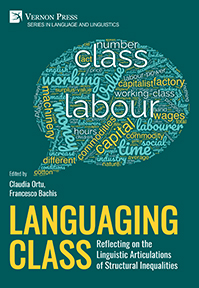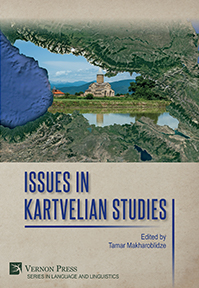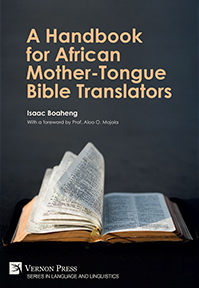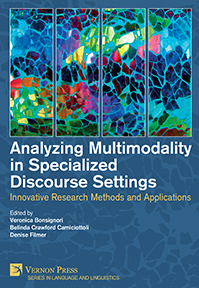Search
Browse
by Publication status
by Subject
Anthropology (26) Art (124) Business and Finance (26) Cognitive Science and Psychology (54) Communication and Journalism (45) Economics (62) Education (66) History (149) Human Geography (22) Interdisciplinary (42) Language and Linguistics (129) Law (16) Music Studies (18) Philosophy (157) Political Science and International Relations (103) Sociology (304) Statistics and Quantitative Methods (20)by Series
Series in Literary Studies (65) Series in Philosophy (59) Series in Education (51) Series in Sociology (42) Series in Politics (32) Series in World History (32) Bridging Languages and Scholarship (31) Series in Language and Linguistics (25) Cognitive Science and Psychology (20) Series in American History (20) Series in Philosophy of Religion (20) Series in Art (19) Critical Perspectives on Social Science (16) Series in Cinema and Culture (16) Curating and Interpreting Culture (15) Series in Critical Media Studies (14) Series on the History of Art (14) Series in Anthropology (13) Series in Business and Finance (13) Economics (13) Series in Music (12) Series in Communication (9) Series in Performing Arts (9) Philosophy of Personalism (8) Series in Law (8) Series in Economic Methodology (7) Series on Climate Change and Society (7) Women's Studies (7) Classics in Economics (6) Series in Economic Development (6) Philosophy of Forgiveness (5) Series in Built Environment (5) Series in Economic History (5) Series in Philosophy of Science (4) Series in Social Equality and Justice (4) Series on the History of Science (4) Serie En Estudios Literarios (3) Serie en Sociología (3) Series in Contemporary History (3) Series in Creative Writing Studies (3) Series in Design (3) The Interdisciplinary Built Environment (3) Serie en Comunicación y Medios (2) Serie en Historia (2) Series in Heritage Studies (2) Series in Innovation Studies (2) Series in Philosophy of Race (2) Serie en Ciencias Políticas (1) Serie en Entorno Construido (1) Serie en Estudios Culturales (1) Serie en Filosofía (1) Serie en Filosofía de la Ciencia (1) Serie en Música (1) Series in Classical Studies (1) Series in Economics of Technological Change (1) Series in Urban Studies (1)by Language
English Spanishby Author
Browsing with filters
Vernon Series in Language and Linguistics
Languaging Class: Reflecting on the Linguistic Articulations of Structural Inequalities
Edited by
Claudia Ortu, University of Cagliari, Italy
and Francesco Bachis, University of Cagliari, Italy
Availability: In stock
192pp. ¦ $85 £70 €80
This volume explores the issue of social class from the point of view of its linguistic articulations. Indeed, as Machin and Richardson (2008) stated, “discourses may be variously approached as (often simultaneously) reflecting class structures, as a site of class inequalities, as expressive of class identities or class consciousness and/or as a constituent part of more performative class action.” Some of the contributions that make up the volume were presented at a conference held at Cagliari University, Italy, in 2017 and responded to the call for analyses on the role of language in reflecting, maintaining, enacting, and inculcating ideas on social class in literary and non-literary texts and discourses in any cultural or linguistic setting. This volume aspires to encourage scholars in disciplines and academic fields that have shied away from reflections on structural inequalities in favor of studies on ethnic, gender, and cultural identities in the last decades to take back on board the concept of social class and to engage with it in a novel way. The variety of approaches – ranging from the more traditional sociolinguistic one, anthropology, to literary and discourse studies – and cultural settings – with case studies coming from 3 continents – represented in the chapters show that social class is a productive and illuminating concept for trying to (re)make sense of social reproduction and change.
Protomusic: The role of Prosodic Modulation in the Emergence of Language
Alessandra Anastasi, University of Messina, Italy
Availability: In stock
186pp. ¦ $62 £50 €54
Anastasi introduces an alternative vision about language development and music involvement to the current scientific discourse. Her view is based on a rigorous evolutionary perspective, through which she not only demonstrates the hypothesis of vocal continuity with other species via morphological data but, more importantly, also demonstrates how music is first and foremost a biological and cognitive trait. The bond between animal and human communication is here interpreted as an interspecific universal with a clear evolutionary impact on the speech’s natural history. Such continuity does not undermine the species-specificity of our linguistic system and, at the same time, supports the theory according to which music had a clear evolutionary role in the inception of the prosodic and musical components of speech. In leaning towards a bio-naturalistic approach, the most convincing view is that of a vocal and functional continuity of music. This appears to be demonstrable through the evolutionary past of vocality in other animal species, not constrained from having some form of cultural transmission. The book evidences that the current research scenario on non-human animal communication benefits from the support of semiotics and, specifically, zoosemiotics. The latter approach enables us to interpret music and chant not only as a simple formal and meaningless exercise, but rather as a communicative element perceived and processed by organisms equipped with cognitive abilities. Anastasi argues that vocal continuity, made possible by biological constraints that mark its anatomical and physiological aspects, places human beings in a relationship of semiotic continuity with non-human communication forms. In turn, this enables us to better describe the phylogenetic processes which determined the development of musical behaviours in the Sapiens, as well as the way in which such behaviours interwove with the expressive vocality of the animal world.
Issues in Kartvelian Studies
Edited by
Tamar Makharoblidze, Ilia State University, Georgia
Availability: In stock
299pp. ¦ $79 £65 €74
Georgia is a part of the Caucasus region, located at the intersection of Eastern Europe and Western Asia. It is bounded to the west by the Black Sea, to the north and east by Russia, to the south by Turkey and Armenia, and to the southeast by Azerbaijan. Georgia covers a territory of 69,700 square kilometres (26,911 sq mi), and its approximate population is about 3.716 million. Georgia is a motherland of Iberian or Kartvelian languages: Georgian, Svan, Megrelian and Laz, a language family native to the South Caucasus. This diverse collection is devoted to a wide range of linguistic works, such as descriptive studies of the Kartvelian languages and Georgian sign language, along with some theoretical contributions, dialectology, lexicography, psycholinguistics and computational linguistics, as well as history, ethnography, religion and educational issues. These articles are not only the best studies of Kartvelology but also clearly show its contribution to world science.
A Handbook for African Mother-Tongue Bible Translators
Isaac Boaheng, University of Free State, South Africa
Availability: In stock
245pp. ¦ $57 £41 €47
‘A Handbook for African Mother-Tongue Bible Translators’ examines key theoretical and practical issues to equip readers with the basic skills required to translate the Bible naturally, accurately, faithfully and clearly into their mother tongues. Since accurate translation enhances the interpretation and application of Scripture, the book will also improve the hermeneutical ability of the reader. The book is divided into two parts: the first part deals with theoretical issues related to Bible translation in general (with the African context in focus), and the second focuses on the key practical matters in translation. This text will appeal to undergraduate and graduate seminary students and students of translation studies at private and public universities in Africa and beyond; Bible translators and consultants will also find the text useful.
Analyzing Multimodality in Specialized Discourse Settings
Innovative Research Methods and Applications
Edited by
Veronica Bonsignori, University of Rome “Foro Italico”, Rome, Italy et al.
Availability: In stock
200pp. ¦ $81 £63 €69
Contemporary society has witnessed radical changes in the field of communications in terms of how messages and meanings are disseminated. Digitalization and the Internet have signalled an exponential rise in the circulation of multimodal texts in which different semiotic resources are orchestrated together to construct meaning in all areas of social life, across languages and cultures, and in diverse specialized discourse domains. This has foregrounded the need to examine the semiotic functions, affordances, and issues at stake in a range of multimodal discourse forms, while simultaneously highlighting the importance of critical multimodal literacy in audiences and learners. This volume develops and extends pioneering research on the intersection between multimodality and specialized discourse. Seven newly commissioned studies offer innovative perspectives on multimodal research methodologies and applications in a variety of ESP (English for Specific Purposes) contexts for practitioners and scholars alike. The volume offers a glimpse at future directions in this dynamic and ever-evolving area of investigation focusing on the synergy between verbal and non-verbal modes of communication in the digital age. Each chapter explores an original area of application: academic, economic, scientific, marketing, legal, medical, and political. The contributors approach multimodality from a range of theoretical and methodological viewpoints including synchronic and diachronic corpus-based and corpus-aided studies, critical discourse analysis, and systemic functional linguistics. Analytical tools such as multimodal (critical) discourse analysis, multimodal transcription, and multimodal annotation software capable of representing the interplay of different semiotic modes - speech, intonation, direction of gaze, facial expressions, gesturing, and spatial positioning of interlocutors - are employed. The diversity of research strands contained in the volume illustrates just some of the vast areas of multimodal knowledge dissemination that are still unmapped. As a cornerstone of communication, multimodality needs exploring in all its facets. These contributions aim to further that cause.






